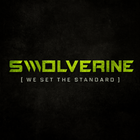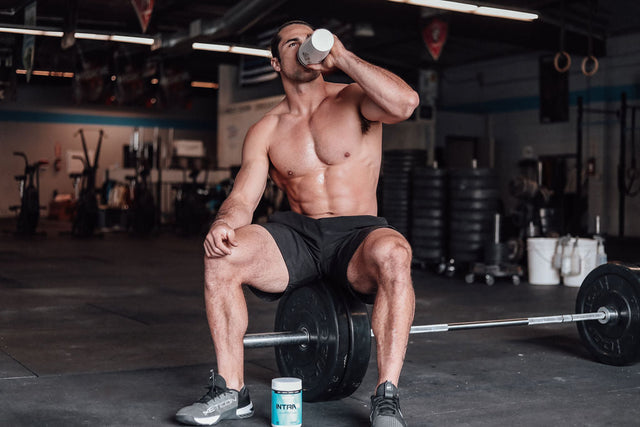If your goal is bigger, more defined arms, your triceps need to be the priority — not an afterthought. While many lifters overemphasize biceps, the triceps actually make up the majority of your upper arm mass. Developing all three heads of the triceps — long, lateral, and medial — is essential for creating both sleeve-stretching thickness and clean muscular separation.
This triceps workout plan is designed to:
-
Maximize hypertrophy through targeted isolation and compound lifts
-
Prioritize all three heads of the triceps with optimal exercise selection
-
Use evidence-based training variables like volume, tempo, and mechanical tension
Whether you’re training for aesthetics, strength, or performance, this approach gives your triceps the overload stimulus they need to grow while preserving joint integrity and longevity.
Triceps Anatomy and Function
To train your triceps effectively, you need to understand the functional anatomy behind them. The triceps brachii is composed of three distinct muscle heads, each contributing to overall arm mass and pressing strength:
-
Long Head
Originates at the scapula and crosses the shoulder joint. It plays a role in shoulder extension and elbow extension. This head is best trained with overhead movements that stretch the triceps under load. -
Lateral Head
The most visible head from the side and top of the arm, contributing to the “horseshoe” shape. It is activated most during heavy pressing and pushdowns with a neutral or pronated grip. -
Medial Head
Located deeper under the other two heads, it assists in all elbow extension movements. It becomes more active during movements with a full range of motion or under fatigue.
👉 To build complete triceps, you need both compound and isolation movements that load the muscle from various angles — especially through a full range of elbow extension.
Training Principles for Triceps Growth
To build triceps that are both massive and defined, you need more than random arm day volume. Effective triceps training hinges on four key principles:
1. Mechanical Tension
Triceps respond well to moderate-to-heavy loads with proper form. Prioritize movements that allow progressive overload — especially pressing and pushdown variations.
2. Exercise Selection
Use a mix of:
-
Compound movements (e.g., close-grip bench press, dips) for overall mass
-
Isolation exercises (e.g., rope pushdowns, overhead extensions) for targeted stress on individual heads
This ensures each head is fully recruited across different planes and positions.
3. Elbow Positioning
Vary elbow placement to hit all heads:
-
Arms overhead → emphasizes the long head
-
Arms at sides → targets the lateral and medial heads
-
Pressing angles → hit all three heads through compound effort
4. Volume and Frequency
Triceps grow best with:
-
10–14 total sets per week
-
6–12 rep range for hypertrophy
-
2 dedicated sessions per week or integrated into push/upper body splits
👉 Don’t overtrain — elbows are sensitive. Focus on controlled reps and full ROM instead of ego-lifting.
Triceps Workout Plan (Sample Routine for Mass and Definition)
This four-exercise plan is structured to deliver high levels of mechanical tension, metabolic stress, and muscle fiber recruitment across all three heads of the triceps. It emphasizes functional angles, volume manipulation, and scientific principles of hypertrophy to stimulate size and definition.
1. Diamond Push-Up
Sets/Reps: 3 sets x 10–15 reps
Primary Target: Medial and lateral heads
Why it works: Diamond push-ups are a bodyweight compound movement proven to significantly activate the triceps, more so than standard or wide push-ups
→ Clemons & Aaron, Journal of Strength and Conditioning Research
How to do it:
-
Start in a plank position with your hands together under your chest, forming a diamond shape with your thumbs and index fingers.
-
Lower yourself slowly while keeping elbows close to your sides.
-
Press up by extending your arms, emphasizing the contraction in your triceps.
Tip: Keep your core tight and hips in line with your shoulders. If needed, regress to knees for full ROM.
2. Seated Overhead Dumbbell Triceps Extension
Sets/Reps: 3 sets x 10–12 reps
Primary Target: Long head of the triceps
Why it works: The overhead position places a deep stretch on the long head, which increases activation due to its biarticular nature
→ Wakahara et al., European Journal of Applied Physiology
How to do it:
-
Sit upright with a dumbbell held overhead using both hands.
-
Lower the dumbbell behind your head slowly, keeping elbows narrow and pointed up.
-
Press the weight up to full extension, squeezing the triceps at the top.
Tip: Use a slower eccentric (3 seconds down) for greater muscle fiber recruitment.
3. Rope Triceps Pushdown (Cable Machine)
Sets/Reps: 3 sets x 12–15 reps
Primary Target: Lateral head
Why it works: Cable-based triceps exercises provide constant tension across the range of motion, improving metabolic stress and hypertrophy potential
→ Schoenfeld, Strength and Conditioning Journal
How to do it:
-
Attach a rope to a high pulley and stand upright with your elbows tucked in.
-
Push the rope down, separating the strands at the bottom of the movement.
-
Control the return and avoid using momentum.
Tip: At peak contraction, briefly pause for maximum engagement of the lateral head.
4. Dumbbell Kickbacks (or Cable Reverse Extensions)
Sets/Reps: 2 sets x 15–20 reps
Primary Target: Medial head
Why it works: High-rep isolation exercises with a full lockout position help exhaust the deeper fibers of the triceps and create visual detail
→ Boeckh-Behrens & Buskies, Strength Training Anatomy
How to do it:
-
Hinge at the waist with a dumbbell in one hand, elbow bent and pinned to your side.
-
Extend your arm fully behind you, locking out the elbow with a controlled tempo.
-
Lower slowly and repeat without swinging.
Tip: Squeeze the triceps hard at the top of each rep. If using cables, match resistance to maintain tension throughout.
Programming Tips and Modifications for Different Goals
Effective triceps training isn’t one-size-fits-all. Your routine should reflect your individual goals — whether you're aiming to build size, cut fat, preserve lean mass, or fine-tune your aesthetics. Below are tailored strategies for hypertrophy, definition, beginner-friendly programming, and advanced performance.
For Mass (Hypertrophy Focus)
To maximize size, your programming should emphasize progressive overload, sufficient volume, and exercises that create high levels of mechanical tension. This stimulates muscle fiber growth, especially when combined with compound lifts and deep-range isolation work.
-
Frequency: 2 times per week (e.g., push/pull/legs split or arm day rotation)
-
Total Weekly Sets: 10–14 for triceps
-
Reps: 8–12 per set for compound lifts; 12–20 for isolation exercises
-
Rest Periods: 60–90 seconds to allow for strength preservation
-
Progressive Load: Increase weight when you can complete top-end reps with good form
According to Schoenfeld (2010), Strength and Conditioning Journal, mechanical tension and volume are the two most critical stimuli for muscular hypertrophy.
For Definition (Fat Loss + Muscle Retention)
When cutting, the primary goal shifts to maintaining lean muscle while enhancing muscular separation and density. This requires high rep ranges, slow eccentrics, and training close to failure to maximize metabolic stress and preserve size.
-
Frequency: 2–3 times per week to maintain training volume
-
Reps: 12–20 with controlled tempo
-
Time Under Tension: 3–4 second eccentric phase on most movements
-
Rest Periods: 30–60 seconds to maintain intensity
-
Training Focus: Isolation movements, high-volume finishers, and full-range contractions
For support during cutting phases, ingredients like L-Citrulline Malate may improve blood flow and muscular endurance.
See: Swolverine L-Citrulline Malate
For Beginners
Beginners should focus on learning proper mechanics, especially elbow control, scapular stability, and full range of motion. Loading should be moderate, with an emphasis on neuromuscular control over maximal resistance.
-
Frequency: 1–2 times per week
-
Reps: 10–15 to reinforce technique
-
Movement Focus: Bodyweight movements (e.g., diamond push-ups), rope pushdowns, and light dumbbell extensions
-
Tips: Avoid dips and skull crushers initially due to stress on the elbow joint
-
Goal: Establish mind-muscle connection and movement consistency before progressing
Form mastery early on improves long-term gains and reduces risk of overuse injury.
For Advanced Lifters
Advanced athletes need more than just heavy pressing. They benefit from intensity techniques, variation in joint angle, and greater attention to training economy and joint health.
-
Techniques: Incorporate supersets, rest-pause sets, tempo changes, and drop sets
-
Movement Diversity: Rotate between overhead, pressdown, and reverse-grip movements
-
Equipment Variety: Alternate between cables, dumbbells, bands, and bodyweight
-
Volume Tolerance: Monitor total sets across push movements to avoid joint overload
-
Periodization: Cycle between strength-focused blocks (6–8 reps) and hypertrophy (10–15 reps)
Advanced athletes may also consider tracking weekly stimulus-to-fatigue ratios to avoid elbow or tendonitis issues while training at higher intensities.
Recovery, Nutrition, and Supplementation Strategies for Triceps Growth
Even the most effective triceps training plan will fall short without adequate recovery, optimal nutrition, and targeted supplementation. Building mass and definition requires a comprehensive approach — what you do outside the gym matters just as much as your reps under load.
1. Recovery: The Muscle Grows After the Gym
Triceps need time to repair and grow, especially after high-volume or high-tension workouts.
-
Rest Days: Give your triceps at least 48 hours of recovery between sessions
-
Sleep: Aim for 7–9 hours of high-quality sleep to maximize growth hormone release
-
Active Recovery: Light cardio, mobility work, or contrast therapy (heat/cold) can reduce soreness and improve tissue quality
“Muscle protein synthesis remains elevated for up to 48 hours post-exercise, depending on the training stimulus.”
— MacDougall et al., Journal of Applied Physiology
2. Nutrition: Fueling Size and Reducing Fatigue
To support muscle growth and definition, your diet should include:
-
Sufficient Protein Intake: 0.7–1.0g per pound of bodyweight daily
-
Carbohydrates: Especially pre- and post-workout to support training intensity and recovery
-
Hydration: Dehydration can reduce training performance and nutrient delivery
Get personalized support through macro-based nutrition coaching at The Swole Kitchen — including strategies to build muscle while staying lean.
“Optimal protein intake enhances muscle hypertrophy when combined with resistance training.”
— Morton et al., British Journal of Sports Medicine
3. Supplementation: Enhancing Triceps Development
The right supplements can improve workout performance, recovery speed, and muscle-building efficiency. Consider these clinically backed options:
-
Kre-Alkalyn Creatine – Buffered creatine with superior absorption and reduced bloating
-
Beta-Alanine – Enhances muscular endurance and volume tolerance
-
L-Glutamine – Supports recovery, muscle repair, and gut health
-
ZMT – Nighttime recovery formula with zinc, magnesium, and Tribulus to support testosterone and sleep quality
“Creatine supplementation consistently enhances strength, lean mass, and performance across a wide range of training protocols.”
— Kreider et al., Journal of the International Society of Sports Nutrition
“Beta-alanine significantly increases muscular endurance by buffering lactic acid accumulation during high-rep resistance training.”
— Hobson et al., Amino Acids
Conclusion: Build Bigger, More Defined Triceps With Purpose
Building triceps that are both massive and well-defined requires more than random arm exercises. You need a strategic, anatomy-based approach that targets all three heads of the triceps with precision, intensity, and proper recovery.
By incorporating:
-
Smart programming (volume, frequency, and variation)
-
Scientifically backed training principles (mechanical tension and range of motion)
-
Proper rest, nutrition, and supplementation
you’ll unlock serious gains in size, strength, and visual definition.
Whether you're just starting out or leveling up your current routine, commit to training your triceps with intent — not just as an afterthought on push day.
For optimal results, pair your training with premium recovery and performance formulas like:
-
Swolverine® Kre-Alkalyn for strength and performance
-
Swolverine® L-Glutamine to speed up recovery
-
Swolverine® ZMT to improve sleep, testosterone, and nightly repair
-
The Swole Kitchen Coaching for customized nutrition to match your physique goals







